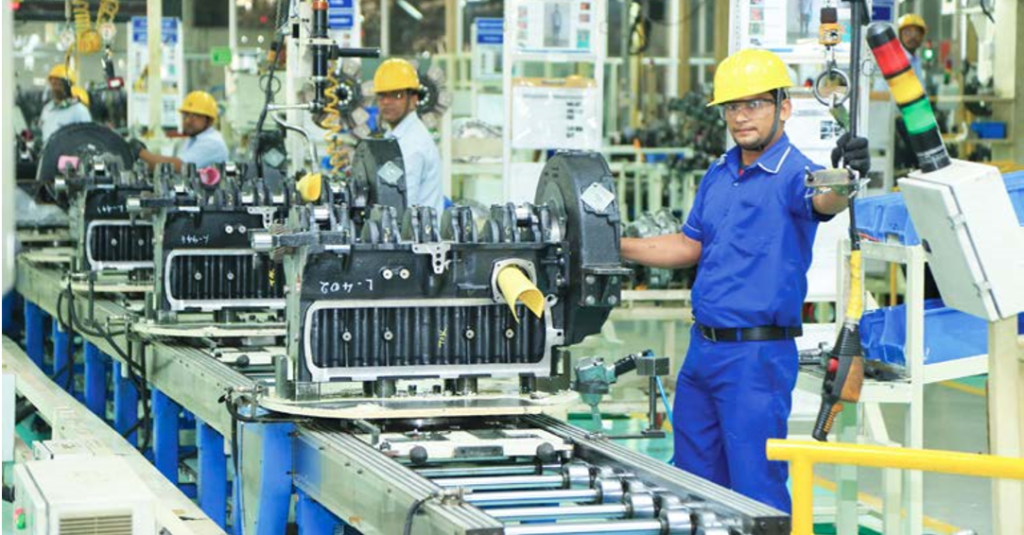By – Binaifer Jehani, Director – CRISIL Research
A clutch of factors is expected to keep Indian automotive component manufacturers cruising for at least five more years.
In fiscal 2018, offtake of auto components is estimated to have spurted 14% on-year, riding on strong demand from domestic original equipment manufacturers (OEMs) and firm exports.

The transition from the Bharat Stage (BS) III to BS-IV norms led to higher average realisation, particularly for commercial vehicle (CV) component manufacturers.
Added to this, demand for two-wheelers rose on improving the rural sentiment for passenger vehicles due to increasing affordability, easier access to finance and various model launches, and for CVs because of improvement in freight demand.
Exports, too, are estimated to have grown 9-11%, given an improving global economic scenario.
In major export destinations, such as the US, auto sales, mainly Class 8 trucks, grew more than 70% in 2017.
Europe also showed signs of revival, and exports to emerging economies in South-East Asia and Latin America also grew significantly.
In fiscal 2019, CRISIL Research expects the auto components industry to grow 12-14% on-year despite the high base.
In the domestic market, sourcing by OEMs is expected to be strong across segments. Improved rural demand (assuming normal monsoon) and State Pay Commission pay-outs are expected to ensure buoyancy in offtake of two-wheelers and passenger vehicles, even as CVs and tractor manufacturers continue to benefit from the Government’s infrastructure push and four consecutive years of good crops.
Exports, the bulk of which is to the US and the euro zone, are expected to rise 8-10% on-year given the firm global automobile demand.
Exports to countries in South-East Asia and Latin America – primarily Brazil, as it recovers from recession – are expected to improve. Besides, several Japanese manufacturers have started sourcing components from India as cost-competitiveness improves due to economies of scale. The northward trend in crude oil prices signals improvement in the Middle East economy as well, though global trade and geo-political issues remain monitorables.
That said, exports in fiscal 2019 will be marginally lower on-year due to capacity constraints faced by auto component players who are increasingly focussing on the domestic market.
And in fiscal 2021, domestic offtake could slow down a notch as the implementation of the BS-VI norms sharply increases automobile prices and thereby impact demand.
Given this, CRISIL Research expects domestic auto component production to log a CAGR of 10-12% between fiscals 2018 and 2023 to ~Rs. 5,223 billion.
Demand from domestic auto OEMs is expected to grow 11-13% a year, on OEMs’ localisation drive and a proliferation of components in vehicles to meet the new emission and safety norms.
Exports, too, should log 10-12% as cost-competitiveness makes India a major sourcing hub for global OEMs. Growth would ride on product-level changes in automobiles, including replacement of metal with plastic / high-grade and lighter metals and increasing electronic content.
Changes in regulations related to emission and safety will also play a role, with emerging technologies such as automated manual transmission, anti-lock braking systems, electronic control units / sensors, and advanced engine designs among the highlights. Further, the requirement of advanced driver assistance systems for lane assistance, distance control and vehicle-to-vehicle communication is on the rise.
At the other end, imports, too, are expected to grow, albeit at a more sedate 6-8% CAGR through fiscal 2023. This would be to support domestic demand despite the higher anti-dumping duty levied on various engine, electrical and chassis parts in the Budget 2018-19.
Longer term, though, transfer of technology through collaboration with foreign players and localisation efforts would help bring down the pace of imports.
